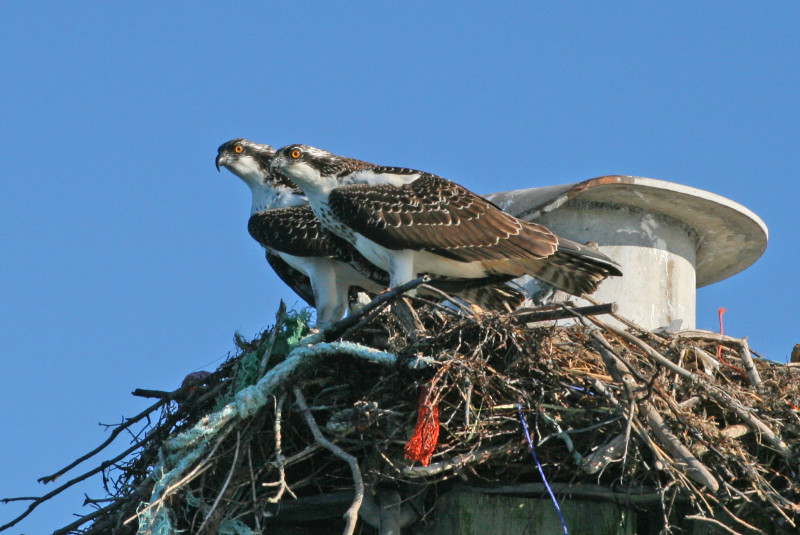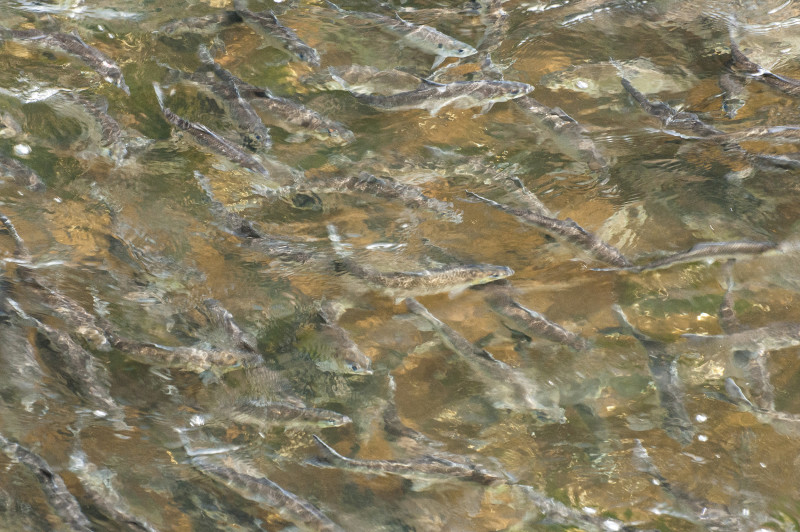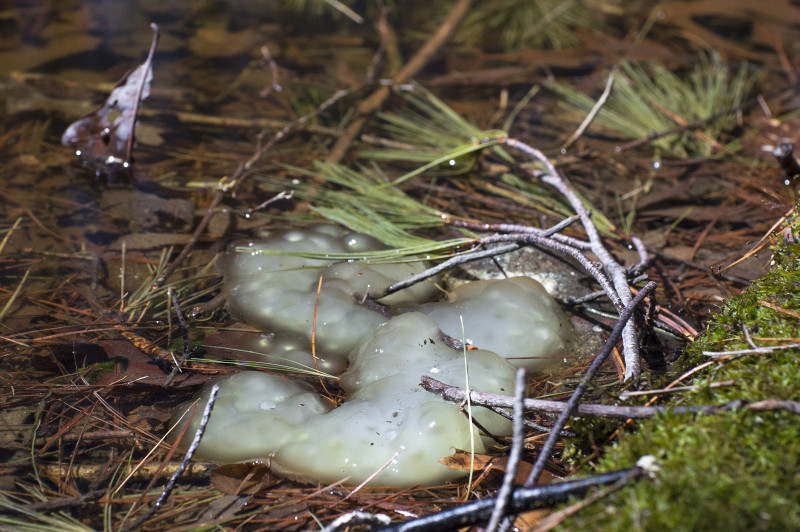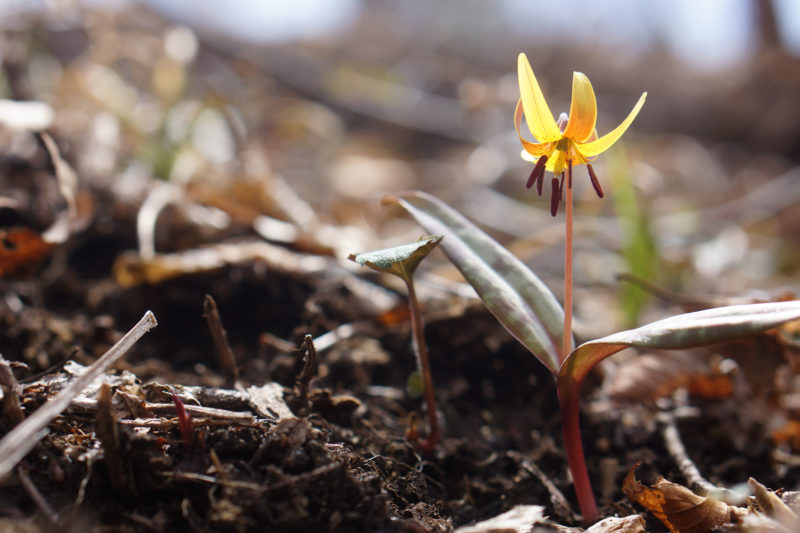9 fun ways to spring back outside as winter ends
Has cold winter weather left you with cabin fever? There’s no need to wait until the summer to start getting outside and enjoying woods, wetlands, and shorelines around Buzzards Bay! As temperatures get warmer and days grow longer, here are nine fun things that you can do outside to get some fresh spring air and celebrate the end of another winter.
1. Search the shoreline for ospreys

Ospreys return from their southern wintering grounds each spring. These big raptors are easily spotted along Buzzards Bay’s coast. (Image: Bill Fihlman)
Though ospreys faced near-extinction in the 1950s and 60s due to DDT exposure, these raptors have made a remarkable recovery. Ospreys are now one of the most common large birds seen around Buzzards Bay, and are also one of the first migratory birds to return the region each spring. Ospreys begin migrating back to Buzzards Bay as early as March, after spending the cold months wintering in Florida, Mexico, and Central and South America. You may spot them making dramatic claw-first dives into the water for fish or scoping out a place for one of their massive summer nests.
Ospreys may be seen hunting along nearly all of Buzzards Bay coastlines, but some go-to hotspots are Quicksand Pond in Little Compton, Horseneck Beach State Reservation in Westport, Demarest Lloyd State Park in Dartmouth, Winsegansett Marsh in Fairhaven, Planting Island Beach in Marion, Mary’s Pond in Rochester, Wickets Island in Wareham, Lyman Reserve in Plymouth, and Quaker Marsh in Falmouth.
2. Take an evening nature walk
As nighttime temperatures creep above freezing, you’ll notice a huge uptick in nocturnal activity from local animals. And with sunset becoming later by the day, early spring is a perfect time to get out at dusk to look and listen for signs that these creatures are preparing for spring breeding. In open fields, American woodcock begin their twittering, zig-zagging courtship flights. In the woods, owls start calling with greater frequency as they seek out mates, and frogs like spring peepers start filling the night air with their chirping calls.
A few of our favorite places for an evening spring walk include Dunham’s Brook Conservation Area in Westport, the Lloyd Center for the Environment in Dartmouth, The Bogs in Mattapoisett, Myles Standish State Forest in Carver, White Eagle and Goldavitz Bog in Marion, Four Ponds Conservation Area in Bourne, and Frances A. Crane Wildlife Management Area in Falmouth.
3. Help with a herring count

River herring are considered a “foundation” fish in the Bay ecosystem because they provide a vital source of food for sport fish such as striped bass, as well as water birds.
Each spring, river herring migrate from the Atlantic Ocean into the rivers and streams where they were born to reproduce. To track populations of herring in Buzzards Bay, the Coalition places electronic counters at fish ladders on several local rivers. River herring are an important link in the Bay food web, and tracking their population can give us insights into the health of the ecosystem as a whole.
You can celebrate spring and help us ensure protection for river herring by volunteering as a Baywatcher. Volunteers help install fish counters, record daily numbers, and give these fish a hand by removing debris from fish passageways.
And if you’d like to check out a herring run for yourself, see our list of 10 herring runs you can visit around Buzzards Bay.
4. Learn to ID returning birds
With the arrival of warm weather, you may notice a new cast of avian characters arriving on the wing as well. Learning to identify these migratory bird species is a great way to get excited about the seasonal changes all around you.
If you’re interested in songbirds, the Cornell Lab of Ornithology’s guide to learning bird songs and calls is a good place to start. Some interesting returning songbirds to look out for include the bright orange Baltimore oriole, the flashy scarlet tanager, and the unassuming-looking warbling vireo with its boisterous song. Acrobatic red-winged blackbirds return to marshlands — as do graceful wading birds like great blue herons and great egrets.
If you prefer to spend your spring days strolling the shoreline, you won’t just see returning ospreys. At Horseneck Beach and Gooseberry Island in Westport, Allens Pond Wildlife Sanctuary in Dartmouth, West Island in Fairhaven, and Wood Neck Beach in Falmouth, you’ll spot the roped-off nests of endangered terns and piping plovers. (To protect nesting birds, please watch them from a safe distance.) Migrants like American oystercatchers may also begin to return to Buzzards Bay this time of year.

Frogs and salamanders use vernal pools across Buzzards Bay to breed. They lay their eggs, which look like gelatinous masses, in this delicate ecosystem.
5. Visit a vernal pool
Every spring, snowmelt and rainstorms create wide, shallow ponds in forest depressions called vernal pools. These fascinating habitats host a distinctive array of woodland life. Because they dry up by summertime, vernal pools aren’t home to any fish. Instead, you can discover clumps of translucent amphibian eggs, from species like wood frogs and spotted salamanders, if you peer carefully into these murky waters.
Because vernal pools are extremely sensitive to disturbance, you should only view them from their edges. To find a vernal pool to explore near you, check our list of 13 vernal pools in woodlands around Buzzards Bay.
6. Try trail running
There’s still a chill in the air on many early spring days, but we have an easy way to shake that cold: get moving! Trail running is a great way to explore local trails while keeping warm and getting in some exercise. Unlike the treadmill, trails always offer new challenges for your body and outdoor surprises that change through the season. Plus: even the region’s most popular trails can still be pretty quiet this time of year, meaning you’ll have many places all to yourself.
If you’re ready to lace up your sneakers, we’ve gathered 13 places in southeastern Massachusetts for you to hit the trails and leave winter in the dust.
7. Go maple sugaring
In the early spring, maple trees begin to flow with their delicious, sticky sap. This only happens when maples experience freezing nights and warm days, which “pumps” the sap through the tree as it periodically freezes and defrosts. During this time, maple producers will tap their trees to collect this sap, and then boil it to create concentrated syrup. If you have healthy trees on your property, you can try this at home, or join one of the Coalition’s annual early-spring maple tapping walks at LaPalme Farm in Acushnet.
8. Hunt for early-blooming wildflowers

Trout lilies are one of the first wildflowers to poke out of the forest undergrowth in early spring.
Though we’ll have to wait a few more weeks for spring’s dramatic wildflowers, some early-blooming species have already begun showing their colors. Look for fuzzy pinkish-purple pussy willows on willow trees, bright crocuses in meadows and between trees, and spicebush showing pale yellow in lowland woods. Keen-eyed forest explorers scouring the undergrowth may spy trout lilies nodding their delicate yellow blooms, mayflowers (the Massachusetts state flower) in purple and white, and stunning lavender hepatica hiding in the shade. The best way to appreciate these spring beauties is by taking nothing but photos —picking wildflowers removes a source of food for bees and other pollinators.
Our favorite spots to seek out spring wildflowers include Old Harbor Wildlife Refuge in Westport, Wernick Farm in Dartmouth, Flora B. Peirce Nature Trail in New Bedford, LaPalme Farm in Acushnet, Shaw Farm Trail in Fairhaven, Tripps Mill in Mattapoisett, Halfway Pond Conservation Area in Plymouth, Birch Island Conservation Area in Wareham, Cataumet Greenway in Bourne, and Bourne Farm and Cardoza Farm in Falmouth.
9. Start a “surprise garden”
The time between the end of winter and the start of spring has another name: “mud season.” As the ground thaws and spring rains move in, the area around Buzzards Bay can get a little muddy.
When you don your boots to explore local woodlands, you’ll also be picking up hundreds of seeds deposited by plants and flowers in preparation for spring — seeds that the U.S. Forest Service recommends making into a “surprise garden.” All you have to do is soak the dirt from your muddy soles in water, mix it with potting soil, and store it somewhere warm to grow. When spring frosts end, you can plant these surprise seedlings outdoors and wait for them to reveal themselves!